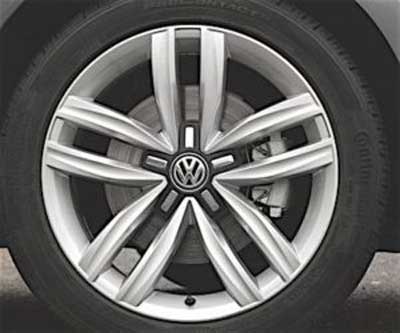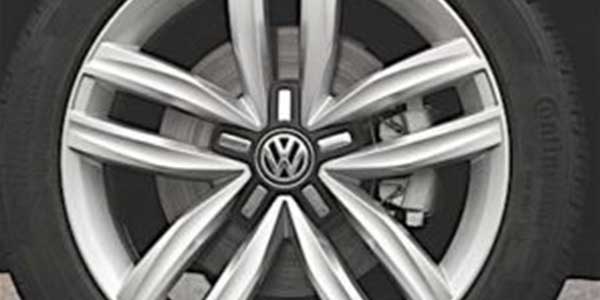Volkswagen Models:
Condition: When applying brakes at highway speeds, the customer my experience pulsation in the brake pedal, steering wheel shake and vibrations in the body.
Cause: Improperly machined brake discs may cause brake pulsation after several months in service. The discs have lateral runout that eventually causes disc thickness variation.
The technician must inspect and measure the brake discs before machining them. The measurements should be recorded. Upon completion of the machining process, the discs should be measured again to ensure the lateral runout has been corrected.
Inspection
A detailed brake disc inspection is necessary to determine if the brake disc should be machined or replaced.
Inspect brake disc friction surfaces on both sides of the brake disc for:
• Severe discoloration (bluing)
• High heat surface damage (raised hard spots)
• Visible cracks
Brake discs showing any of these conditions must be replaced.
Measuring Disc Thickness
All brake discs have the minimum allowed thickness cast, stamped or laser-etched into the disc hub. Measure the brake disc thickness in four locations. Measurements must be taken the same distance from the brake disc outer circumference to ensure consistency. The brake disc thickness measurement must exceed the minimum thickness specification after the machining process is completed to be reused.
Brake Disc Machining
Brake discs must be machined in pairs (front axle and/or rear axle) using an on-the-car brake lathe. This type of brake lathe will produce a surface quality that will provide proper brake performance without a “brake pad to brake disc” break-in period.
Follow the brake lathe manufacturer’s instructions for setup and machining. Always wash the brake disc with soap and water solution upon completion of resurfacing to remove all machining particles.
Article courtesy ImportCar.














